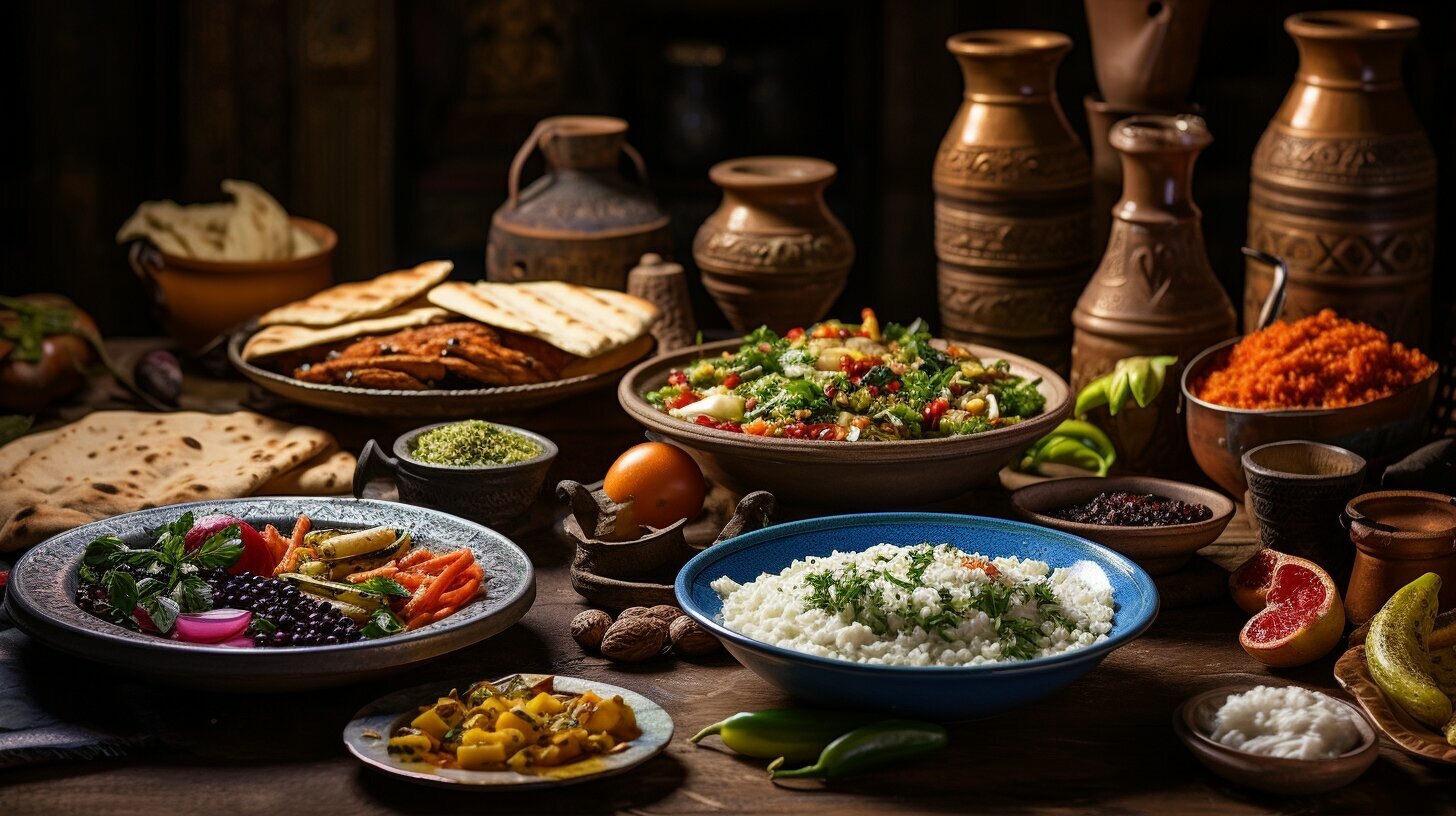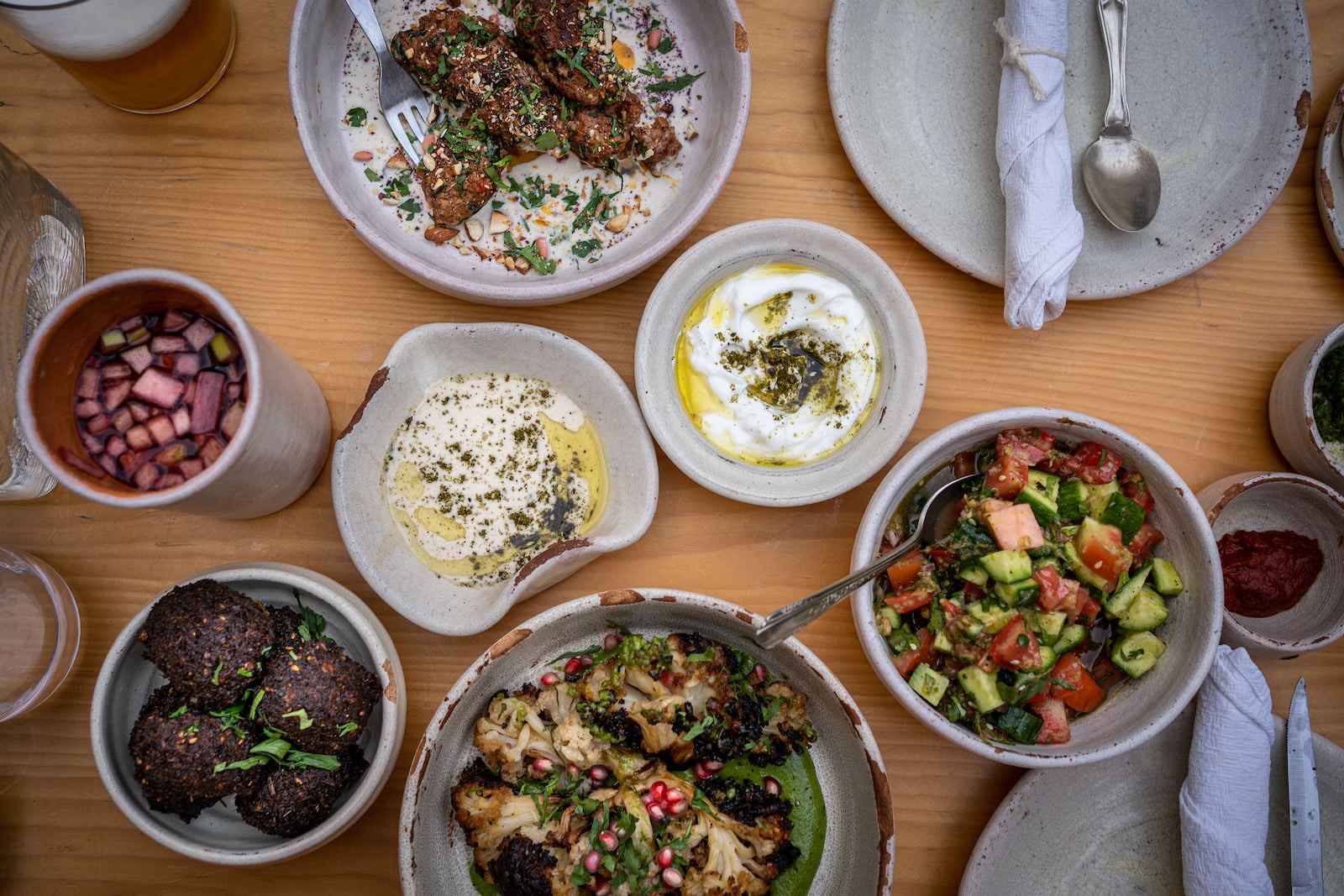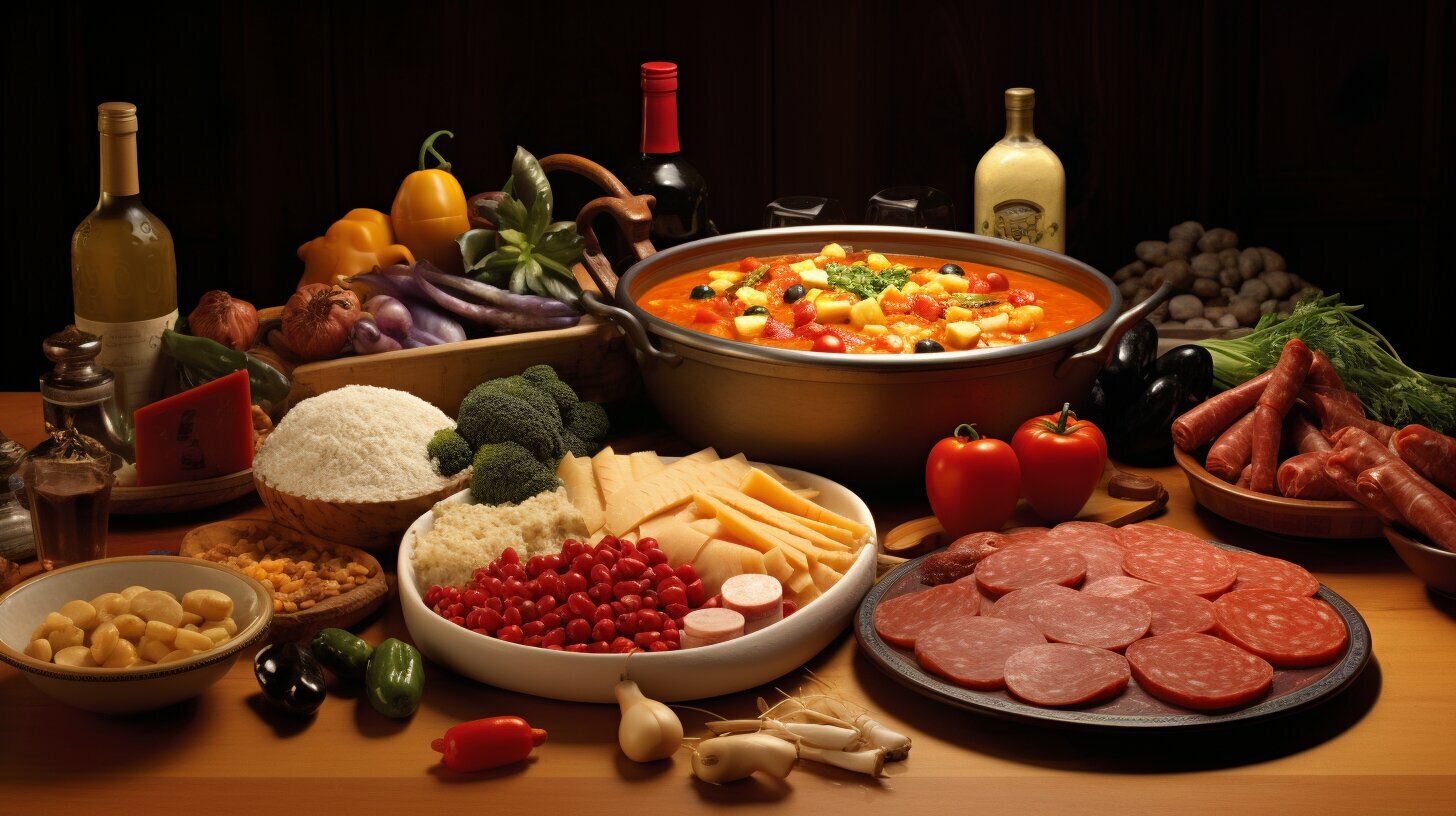Russian and Ukrainian cuisines share many similarities due to their shared history and location in the Slavic region. Both are known for their hearty and comforting dishes that use simple ingredients to create flavorful meals. However, there are also distinct differences between these two culinary traditions that reflect their unique cultural identities.
Traditional Russian cuisine has been greatly influenced by the country’s harsh climate and long history of trade with neighboring countries. Ukrainian cuisine, on the other hand, has been shaped by its fertile soil and agricultural traditions. Both cuisines have evolved over time, incorporating new ingredients and techniques while still maintaining their traditional roots.
Key Takeaways:
- Russian and Ukrainian cuisines share many similarities due to their shared history and location in the Slavic region.
- Traditional Russian cuisine has been greatly influenced by the country’s harsh climate and long history of trade with neighboring countries.
- Ukrainian cuisine has been shaped by its fertile soil and agricultural traditions.
- Both cuisines have evolved over time, incorporating new ingredients and techniques while still maintaining their traditional roots.
Russian Cuisine: A Culinary Journey
When it comes to Russian cuisine, there is a rich history and an abundance of unique dishes that are sure to tantalize the taste buds. Traditional Russian dishes are known for their hearty ingredients and bold flavors, reflecting the country’s harsh climate and agricultural traditions.
One of the most iconic Russian dishes is borscht, a hearty soup made with beets, cabbage, and meat or sausage. Other popular dishes include pelmeni, a type of dumpling filled with meat or potatoes; and blini, thin pancakes that can be filled with an array of sweet or savory ingredients.
Russian food culture places a strong emphasis on hospitality and communal eating, with meals often lasting for hours and featuring multiple courses. Russians also have a strong attachment to their culinary traditions, which have been passed down through generations.
Despite the variety of dishes and ingredients used in Russian cuisine, there are some common threads that tie it all together. Sour cream, dill, and pickled vegetables are all commonly used in Russian cooking, adding a distinctive tangy flavor to many dishes. Additionally, slow cooking and braising are common techniques used to tenderize meat and vegetables, making them easier to digest and more flavorful.
Ukrainian Cuisine: A Taste of Tradition
Ukrainian cuisine is steeped in tradition and plays an essential role in the country’s cultural identity. Influenced by its neighbors, including Russia and Poland, Ukrainian cuisine is a unique blend of flavors and techniques.
But what really sets Ukrainian cuisine apart is its emphasis on using fresh, locally sourced ingredients. From meat to vegetables, everything is grown and harvested in Ukraine, giving the cuisine its distinctive taste and quality.
Traditional Ukrainian dishes are hearty and comforting, perfect for the harsh winters the country experiences. One iconic dish is varenyky, a type of dumpling stuffed with potatoes, cheese, or fruit. Another favorite is borscht, a soup made with beets, cabbage, and beef or pork. Holubtsi, or stuffed cabbage rolls, are also a staple in Ukrainian cuisine.
Food plays a significant role in Ukrainian culture, with meals often being the centerpiece of celebrations and gatherings. Many traditional dishes are passed down from generation to generation, preserving the culinary heritage of the country.
Overall, Ukrainian cuisine offers a taste of tradition, with its unique flavors and emphasis on locally sourced ingredients.
Similarities Between Russian and Ukrainian Cuisine
Russian and Ukrainian cuisine share several similarities owing to their shared history and geographical proximity. Both cuisines use a lot of sour cream, dill, and garlic in their recipes. Soups are also popular in both traditions, with borscht being a staple dish in both countries.
| Similarities | Russian Cuisine | Ukrainian Cuisine |
|---|---|---|
| Ingredients | Both cuisines rely heavily on potatoes, beets, eggs, and meat. | Local and seasonal ingredients are used in both cuisines, with a focus on dishes made from grains, vegetables, and dairy products. |
| Flavors | Russian dishes tend to be hearty and savory, with a preference for salt and sour flavors. | Ukrainian cuisine has a similar preference for savory flavors, but with a greater emphasis on sweetness and spiciness. |
| Cooking Methods | Baking, boiling, and frying are popular cooking methods in Russian cuisine. | Ukrainian cuisine relies heavily on simmering and stewing. |
While there are many similarities between Russian and Ukrainian cuisine, it is important to note that each country also has its own unique regional variations. For example, Ukrainian cuisine features more dumpling dishes like varenyky, while Russian cuisine is known for its use of smoked fish and meats.
Differences Between Russian and Ukrainian Cuisine
While Russian and Ukrainian cuisine share some similarities, they also have distinct differences that set them apart. Here are some of the differences between Russian and Ukrainian cuisine that you should know:
1. Flavors
Russian cuisine is known for its rich and hearty flavors, often featuring sour cream, butter, and dill. Ukrainian cuisine, on the other hand, tends to use more garlic and onion, often featuring a sweet and sour taste.
2. Techniques
The techniques used in Russian and Ukrainian cuisine differ as well. For example, Russian cuisine often emphasizes slow-cooking and the use of stews and casseroles, while Ukrainian cuisine often involves grilling and roasting meats.
3. Traditional Dishes
Both cuisines have their own traditional dishes that are unique to their culture. Russian cuisine features dishes such as beef stroganoff, pelmeni (dumplings), and blini (pancakes). Ukrainian cuisine features dishes such as varenyky (dumplings), borscht (beet soup), and holubtsi (stuffed cabbage rolls).
4. Influences
Both Russian and Ukrainian cuisine have been influenced by neighboring countries, but in different ways. Russian cuisine has been influenced by Asian and European cuisines, while Ukrainian cuisine has been influenced by Polish, Hungarian, and Turkish cuisines.
By understanding the differences between Russian and Ukrainian cuisine, you can appreciate the unique flavors and traditions of each cuisine. Whether you’re a fan of hearty stews or sweet and sour soups, both cuisines offer something special for your taste buds.
Difference Between Russian and Ukrainian Cuisine
In conclusion, the culinary traditions of Russia and Ukraine are rich with unique flavors and cultural significance. While both cuisines share similarities in ingredients, techniques, and history, they also have distinct qualities that set them apart. Russian cuisine offers a diverse range of dishes, from hearty soups like borscht to delicate crepes like blini. Ukrainian cuisine, on the other hand, features comforting dishes like varenyky and holubtsi that are often enjoyed during special occasions.
Exploring the difference between Russian and Ukrainian cuisine allows us to appreciate the diversity of Slavic cuisine, and the important role that food plays in these cultures. Whether you are a foodie looking to discover new flavors or someone interested in learning more about the history and traditions of these countries, there is something for everyone to enjoy. So go ahead, indulge in a bowl of borscht or a plate of varenyky, and savor the unique tastes of Russia and Ukraine.
FAQ
Q: What are some popular Russian dishes?
A: Some popular Russian dishes include borscht, pelmeni, and blini.
Q: What are some traditional Ukrainian dishes?
A: Traditional Ukrainian dishes include varenyky, borscht, and holubtsi.
Q: Are there any similarities between Russian and Ukrainian cuisine?
A: Yes, both cuisines share similarities in ingredients, flavors, and cooking methods.
Q: How do Russian and Ukrainian cuisines differ?
A: Russian and Ukrainian cuisines differ in terms of flavors, techniques, and traditional dishes.



